






| Common Kestrel (Falco tinnunculus (Linnaeus, 1758)) |







|
|
Scientific name: Falco tinnunculus (Linnaeus, 1758) Common name: Common Kestrel French name: Faucon crécerelle, Émouchet Order: Falconiformes Family: Falconidae Size: Body size: 28 to 36cm; Wingspan: 65 to 82cm; Weight: 190 to 240g for the male, 220 à 300g for the female. Habitat: Meadows, mountain meadows, moorlands, open cultivated areas and any open area. Some birds live in towns. Food: Rodents, frogs, lizards and insects. Nesting: The Common Kestrel does not build a nest. It reuses old Magpie or Crow's nests. It can also nest in holes in rocks or buildings (towers, steeples, etc. ). The female lays 2 to 7 eggs between April and August. Migration: Sedentary, partially migratory. Northern birds can move to North and West Africa in winter. Geographic area: Europe, Asia, Africa. |
The Common Kestrel is a very common diurnal bird of prey. The bill is dark grey, short and hooked at the base. Males have a blue grey head, neck and tail. The upper side is brown with black spots. The underside is yellowish brown with black stripes. The legs are yellow. The tail ends with a wide black border. The female's head is pale brown with dark brown stripes. The back is reddish with black spots and black stripes. The tail is reddish and also ends with a wide black border. Hunting Common Kestrel's flight is very typical. It is called "Holy Spirit" flight in France. The Common Kestrel flies in front of the wind, remaining stationary, with its tail wide open. |
| [To know more about the Common Kestrel] [Next picture] [Top] |
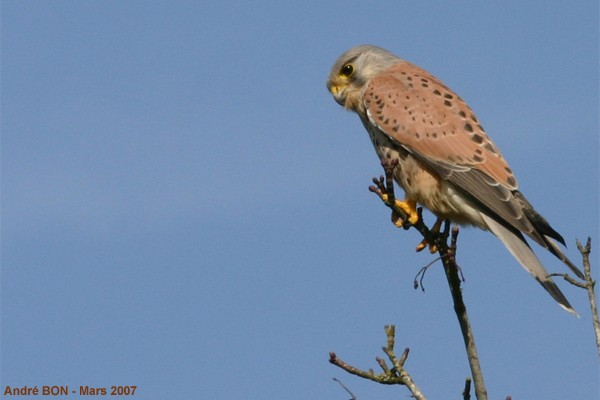
|
This Common Kestrel landed on the top of a tree on the road side as we were driving to take pictures of Great Crested grebes. It didn't pay attention to us and we have been able to observe it during several minutes. |
| [To know more about the Common Kestrel] [Next picture] [Previous picture] [Top] |
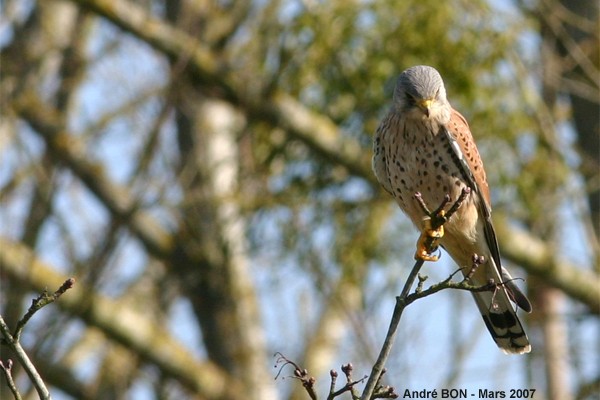
|
The blue grey head indicates that this one is a male. |
| [To know more about the Common Kestrel] [Next picture] [Previous picture] [Top] |
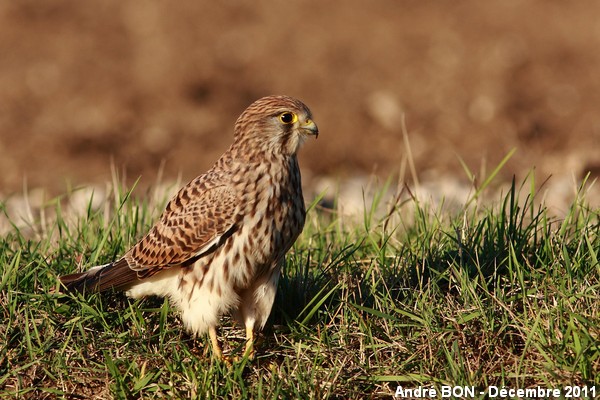
|
This female Common Kestrel, certainly one juvenile of the year, was constantly staying next to a small road. I think that it was accompanied by the other birds of the same brood. So I have shot a many pictures from my car. |
| [To know more about the Common Kestrel] [Next picture] [Previous picture] [Top] |
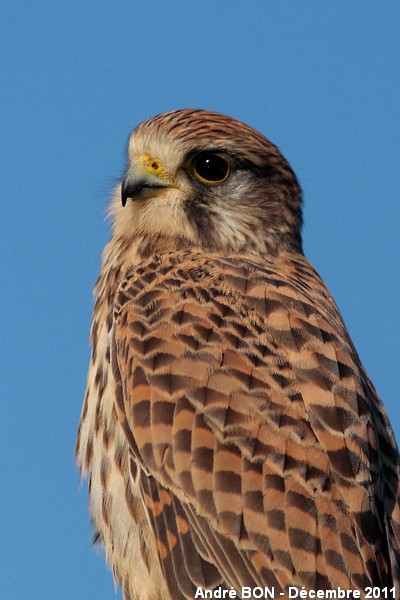
|
This Common Kestrel is landed on a traffic sign. I have slightly cropped the picture to remove what you could have seen of the support which is not very aesthetic. |
| [To know more about the Common Kestrel] [Next picture] [Previous picture] [Top] |
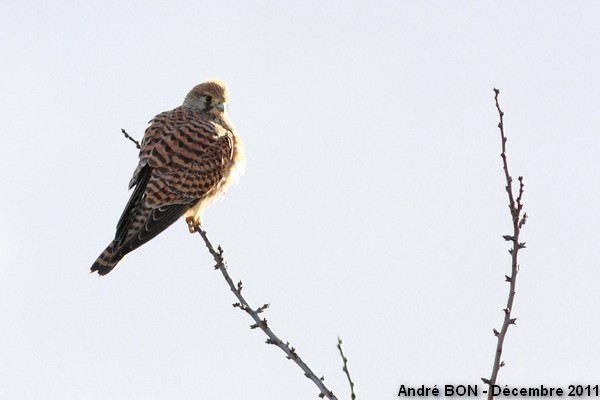
|
You do not choose on which side of the road the Common Kestrel will land. It is here very hardly back-lighted but I have been able to adjust the exposure accordingly. |
| [To know more about the Common Kestrel] [Next picture] [Previous picture] [Top] |
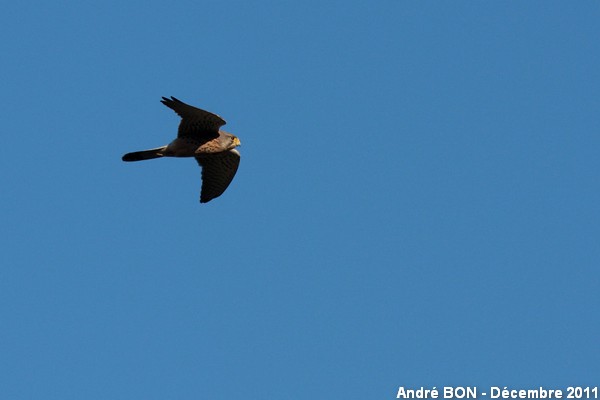
|
Still missing one picture of the "Holy Spirit" flight with its nice wide open tail (you still need to wait), here is a picture of a move in direct flight. |
| [To know more about the Common Kestrel] [Previous picture] [Top] |
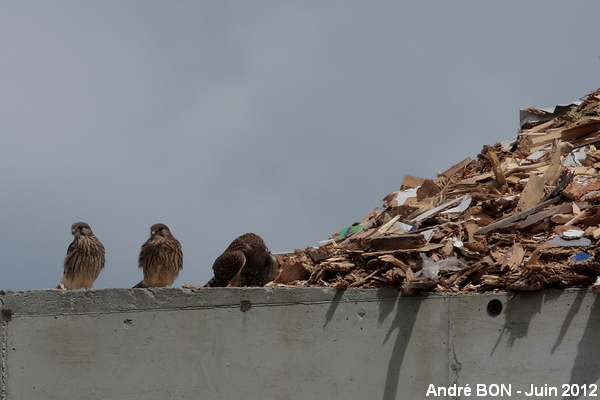
|
This picture is an important crop as I watched this scene in the far from the fence surrounding the large Waste Disposal Centre. An adult Common Kestrel cuts up a small rodent for her offspring. |